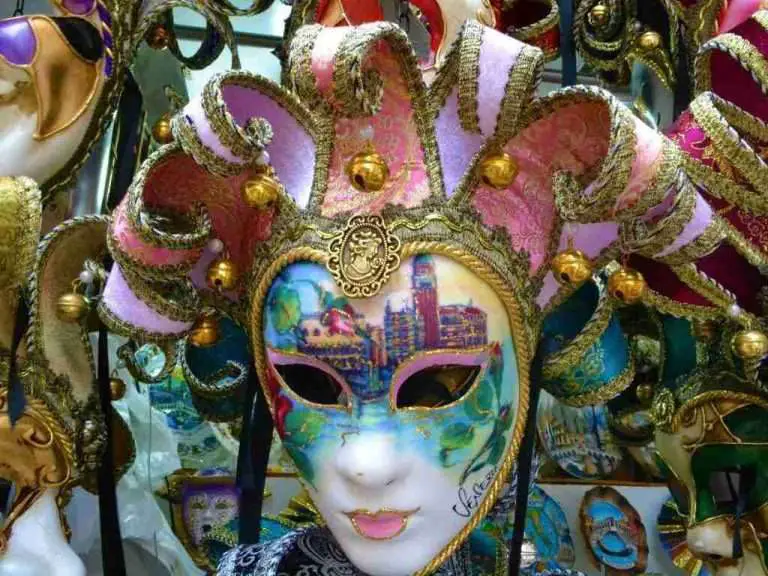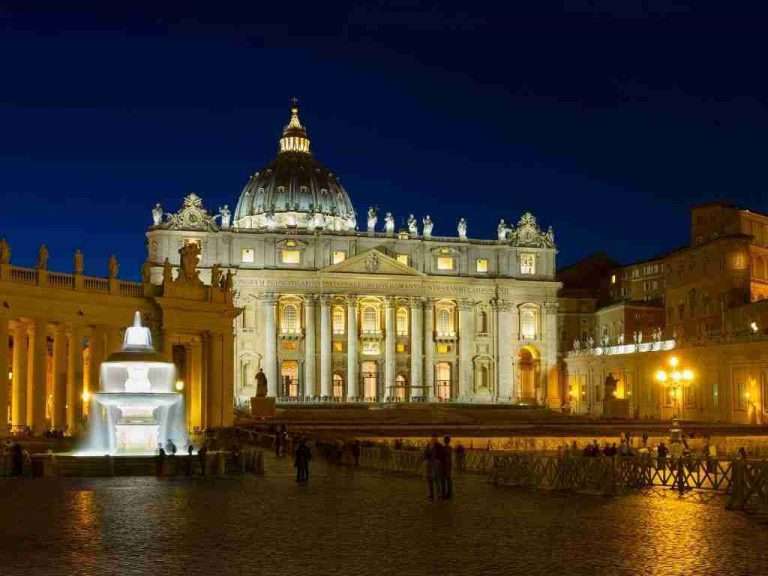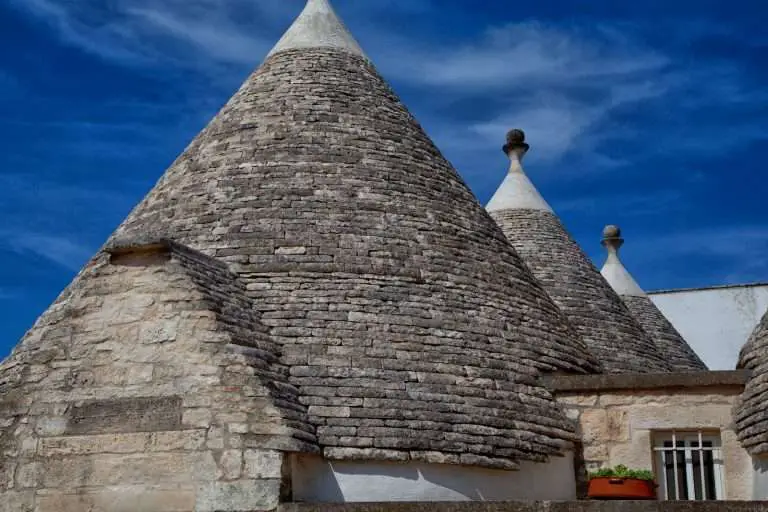
Umbria, the region right in the heart of central Italy, is blessed with beautiful hill towns. Etruscans, Romans, and subsequent civilizations built many of their cities on hills in Umbria so as to defend from foreign invaders. Today, the foreign invaders to these elevated areas are tourists who are rewarded with magnificent views.
8 Beautiful Hill Towns for Your Umbria Itinerary
Assisi: Home of Saint Francis

Located in the heights of Mount Subasio, Assisi is one of Italy’s most visited towns because of its ties to St. Francis, Italy’s patron saint. Assisi always appears to be bathed in a pale golden-pink light–even when it’s cloudy, the massive church of Saint Francis, seems to have a spotlight on it – a heavenly glow.
The best place in Assisi to enjoy the views of the valley below is from the Rocca Maggiore, the commanding 12C fortress that would, were it not for the Basilica San Francesco, dominate the Assisi skyline.
Gubbio: Windswept, With a Famous Festival

Gubbio sits on the lowest slope of Mount Ingino, a mountain that is the site of a famous medieval festival – the Corsa dei Ceri – which takes place each year on May 15.
The Corsa dei Ceri features three teams carrying giant candles (ceri) up the hill to the Saint Ubaldo church. The rest of the year, Gubbio’s charms lie in its stern, medieval facades, such as the Palazzo dei Consoli, which houses the Eugubine Tablets, bronze tablets engraved with the earliest known example of the ancient Umbrii language.
Montefalco: The Balcony of Umbria

The town that gets the title as the “Balcony of Umbria” is Montefalco, a small town about 20 miles from Perugia (the regional capital). Surrounded by medieval walls, Montefalco has, in addition to its 360-degree panoramas of the Umbrian countryside, several claims to fame. Approximately eight saints were born in Umbria, including Saint Clare. A different saint – Saint Francis – is depicted in a lovely fresco cycle by Benozzo Gozzoli in the town’s Chiesa San Francesca. Finally, Montefalco, which lies in the middle of Umbria’s wine-growing region, is best known for its delicious Sagrantino.
Orvieto: Just Plain Gorgeous

This is one of my favorite towns in all of Italy.
An easy day trip from Rome, Orvieto stands atop a high, impregnable, volcanic plateau and is perhaps more impressive from the ground looking up than for the views of the valley that it affords. Known as Velzna when it was part of the Etruscan League, Orvieto is on the religious map because it was near the site of the Miracle of Transubstantiation (or, Corpus Christi), and, as a result, has a magnificent Gothic cathedral with frescoes by Luca Signorelli.
Spello: Walls, Flowers, and Frescoes

Situated a few miles south of Assisi, this little walled town with a serene air overlooking the Valle Umbra reminds me of a miniature Assisi. Although it’s well-known for its medieval walls and Roman gates (built when the town was known as Hispellum), Spello has a softer, artistic side.
The annual event Infiorate di Spello brings visitors from all over the region and Italy to view gorgeous, sweet-smelling portraits and dioramas made only of flowers. If you can’t be in Spello in early June (the typical date of the flower fair), it is still worth going on a side trip here to enjoy the astounding Pinturicchio frescoes in the Baglioni Chapel in Santa Maria Maggiore. These frescoes are considered some of the artist’s best work, prompting many to call the Cappella Baglioni the “Cappella Bella.”
Spoleto: Roman Past, Artsy Present

Right along the Via Flaminia (yes, that same Via Flaminia that leads into Rome) is Spoleto, a strategic city for the Romans (then called Spoletium) and even the site of a battle with Hannibal during the Second Punic War. Spoleto has tremendous Roman, medieval, and Renaissance roots, boasting a Roman amphitheater, the six-towered Rocca Albornoz citadel, and the Ponte delle Torri, the massive “towers bridge” that was an impressive feat of engineering in the 14C.
While the city has lots of the typical central Italian attractions, it is today known chiefly for the Festival dei Due Mondi, or the Festival of Two Worlds. The comprehensive arts festival goes on for two weeks each summer (usually from mid-June to July) and includes opera, theater, dance, and other performances. One of Italy’s longest running and best known arts festivals, the Festival dei Due Mondi was begun in 1958 by Spoleto native Gian Carlo Menotti.
Todi: “World’s Most Livable City”

A town that’s been billed as the “world’s most livable” must be a nice place to visit, right? Absolutely! Spread on a hill overlooking the Tiber Valley, Todi has what some consider the most beautiful square in Italy. Three medieval palaces – the Palazzo dei Priori, the Palazzo del Capitano, and the Palazzo del Popolo – front the Piazza del Popolo, producing a scene so picturesque that the square has been used multiple times as a film set.
Todi’s compact city center has also earned it accolades from a University of Kentucky architecture professor who, in the 1990s, proclaimed Todi as an ideal city because of its human scale. For better or for worse, that proclamation set off a real estate frenzy among buyers from all over Europe and the United States. But there are still plenty of Tudertini to keep the local traditions alive.
Though Todi is charmer, the best reasons to visit are its antique fairs – the Rassegna Antiquaria d’Italia (in April) and the Mostra Nazionale dell’Artigianato (in August and September) and the spectacular temple of Santa Maria della Consolazione, a masterpiece by Bramante and one of the best examples of Renaissance architecture in Umbria.
Trevi: Ancient Temple, Fountains, and Olive Oil

Unmistakable Trevi and its medieval buildings flower on the Umbrian hillside like clusters of edelweiss on a mountain. Some visitors even compare Trevi to an Umbrian Positano (the famous town on the Amalfi Coast) because its appearance from a distance resembles the practically vertical nature of the cliff-side village. Trevi was yet another outpost during Roman times because it was at the crossroads of three roads (“tre vie”), including the Via Flaminia. Trevi boasts dozens of churches, including the church of Sant’Emiliano, whose belltower crowns the hill upon which Trevi sits.
Two of Trevi’s most famous attractions, however, aren’t in Trevi at all; they lie just below the town by the Clitunno River. The Fonti del Clitunno, a series of lagoons, islands, and springs, is an oasis in landlocked Umbria. The tranquil spot was lauded by Byron, Italian poet Giosué Carducci, and Roman poet Virgil. The other sight near the River Clitunno is the Tempietto del Clitunno (Little Temple of Clitunno), long thought to be a Roman construction but it actually dates from sometime between the 6-8C. It’s a beautiful example of classical architecture that’s unusual to find in these environs.
Finally, Trevi, which is surrounded by gorgeous, silvery olive trees (including the olive tree of Saint Emiliano, dated at about 1,700 years old) is known throughout Italy for its fine olive oil. That is some accolade given that the region as a whole is known for its oil. If you are passing through Trevi, stop by and pick up a bottle of its delicious, artisanal oil. Two good places to try are Frantoio Gaudenzi and Gradassi, located in the hamlet of Campello sul Clitunno. Gradassi also runs its own trattoria which features typical Umbrian fare.




Post first published on November 10, 2009






